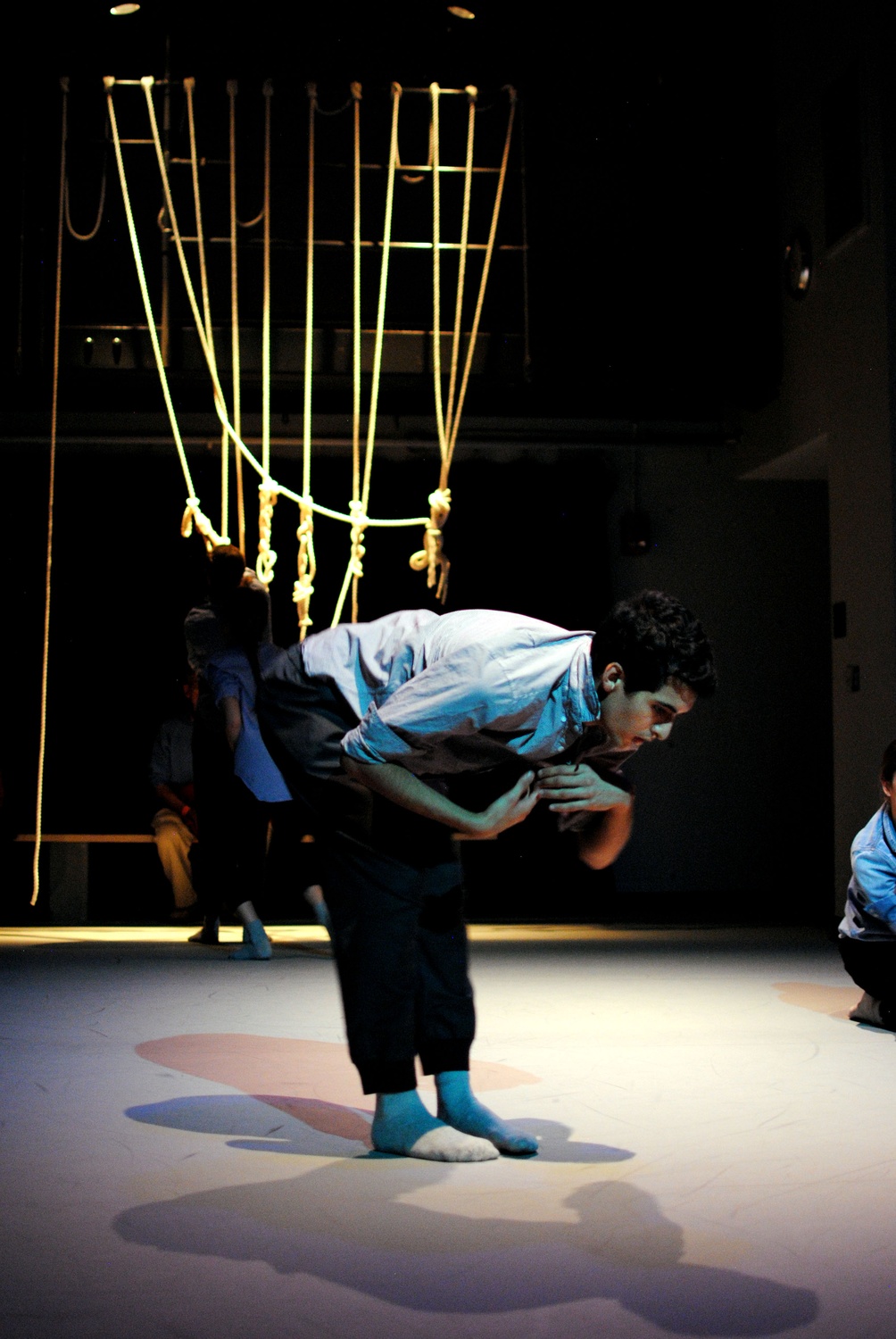
News
Harvard Researchers Develop AI-Driven Framework To Study Social Interactions, A Step Forward for Autism Research

News
Harvard Innovation Labs Announces 25 President’s Innovation Challenge Finalists

News
Graduate Student Council To Vote on Meeting Attendance Policy

News
Pop Hits and Politics: At Yardfest, Students Dance to Bedingfield and a Student Band Condemns Trump

News
Billionaire Investor Gerald Chan Under Scrutiny for Neglect of Historic Harvard Square Theater
LOOK UP Mesmerizes, Engages

“In performance, the coolest thing is when you’re surprised as the dancer,” says Julia K. Cataldo ’15, a dancer in LOOK UP, the first in a series of performances by the Harvard Dance Project. LOOK UP, described by creator Jill Johnson as a “gallery in motion,” brings audience interaction and a live-gallery setting to the art of dance in the form of a two-hour live-action performance that examines inspiration and movement in the digital age. LOOK UP’s dancers are enrolled in a year-long faculty-led ensemble course that seeks to foster creativity and fearlessness in artistry.
LOOK UP revolves around indeterminacy; throughout the installation, dancers move fluidly between partitioned rooms that each have a different theme. In the “Noticing” room, viewers use a Polaroid camera to snap a photograph of a hand or eye and hang them up in a frame. Dancers flit into the room, inquisitively inspect the photos, and use the photos as inspiration for movement. Likewise, visitors in the “Mapping” room use a faded green typewriter to finish prompts such as “A thunderstorm is…” and “My favorite sound is…” to create short, poignant sentences that, when read aloud, sound like spoken word poetry.
Essential to the experience of LOOK UP is the sense of interaction between individual dancers, dancers and the audience, and among audience members. Dancer Whitney M. Cover GSE ’15 emphasizes LOOK UP’s ability to create a feeling of solidarity. “I think that [LOOK UP] is really about sharing this world that we’ve created: a very special space that we’re all existing in together for this short period of time,” Cover says.
Maya M. Park ’16, a dancer in the project and active editor for Fifteen Minutes Magazine, agrees. “It’s a new way of looking at dance. And it’s a different space to exist in. It’s a place where you go see dance but you’re not sitting down watching a stage.”
Nieman Fellow and National Public Radio writer Kitty Eisele noted LOOK UP’s emphasis on audience participation. “I think dance isn’t just this thing you stare at,” Eisele said. “[Usually], there is a sense that you sit there [and watch the performance] for two hours like you’re watching TV. It’s very passive. [Here], it’s accessible. Anybody can do it. That’s what I’m taking from this.”
LOOK UP is a sensual feast, using sounds as well as lighting and touch to create a thoughtful, musing atmosphere. Aurally, the installation is mostly silence punctuated by repeating, industrial sounds: the screech of duct tape or the distant whistle of a train. The thrumming beats provide a backdrop for the dancers to experiment with rhythm and motion.
Cover acknowledges the difficulties in responding to unchanging source material. “I think that one of the challenges it presents is because it is monotonous, it’s our job not to be a slave to that monotony, and to keep variation and to maintain uncertainty and unpredictability and surprise and an internal driving rhythm in the absence of one.”
Another element that sets LOOK UP apart is the immediate spontaneity of the motions. “Something that we all feel is that the improvisation is very timeless,” Cataldo says. “It’s kind of the coolest thing—you’re in this world that’s like…the ‘not-knowing’ world. You think, ‘This is the timing that I’m doing.’ And [the other dancers are] doing a different timing.”
Park agrees. “We’ve been talking about...dance time versus real time,” Park says. “So rarely in real life do we even get to live in real time—to put up your hand and just sort of watch it for a while. So ideally, [LOOK UP] is a place where you can exhale for a bit. And for once, it’s okay to lose track of time. That’s where we have to be. And that’s where you chose to be.”
When asked about the inherent meaning of LOOK UP, Park and Cataldo laugh. “Well, are we looking up? Are [the dancers] looking up? Are we supposed to look up? What are we even looking at?”
So what is the inherent message? The best answer may be that there is no right answer.
“Jill refers to it as a movement gallery, and I think the intention is to look at this as you would a museum,” Cover says. “We’re trying to give the audience a choice. You have a choice of what you look at, you have a choice of when you come, but also…it’s hopefully maybe equating the experience of looking at contemporary art with looking at contemporary dance, where it’s about your interpretation.”
Regardless of its abstractness, the experience of LOOK UP seems to resonate with the audience. “I think it’s a physical manifestation of a beautiful desire to communicate something,” Eisele says. “I think [the dancers] were talking back to a dominant technical culture in a really poetic way. And they’re looking up, you know: ‘Step away from your phone and look up at each other.’”
Want to keep up with breaking news? Subscribe to our email newsletter.
Most Read
- More Than $110 Million in NIH Grants to Harvard, Affiliated Hospitals Terminated Since Late February
- After Trump’s Demands, Dean of Students Says College Diversity Offices Have No Plans To Cut Programming
- Pritzker Says Harvard Is ‘All Over’ Supporting Students Whose Visas Were Revoked
- Harvard Is Turning Its Back on Scholasticide in Palestine
- Visas Revoked for 4 More Harvard Students and 3 Recent Grads, Bringing Total to 12
